Saleswhale Blog | 27 Min Read
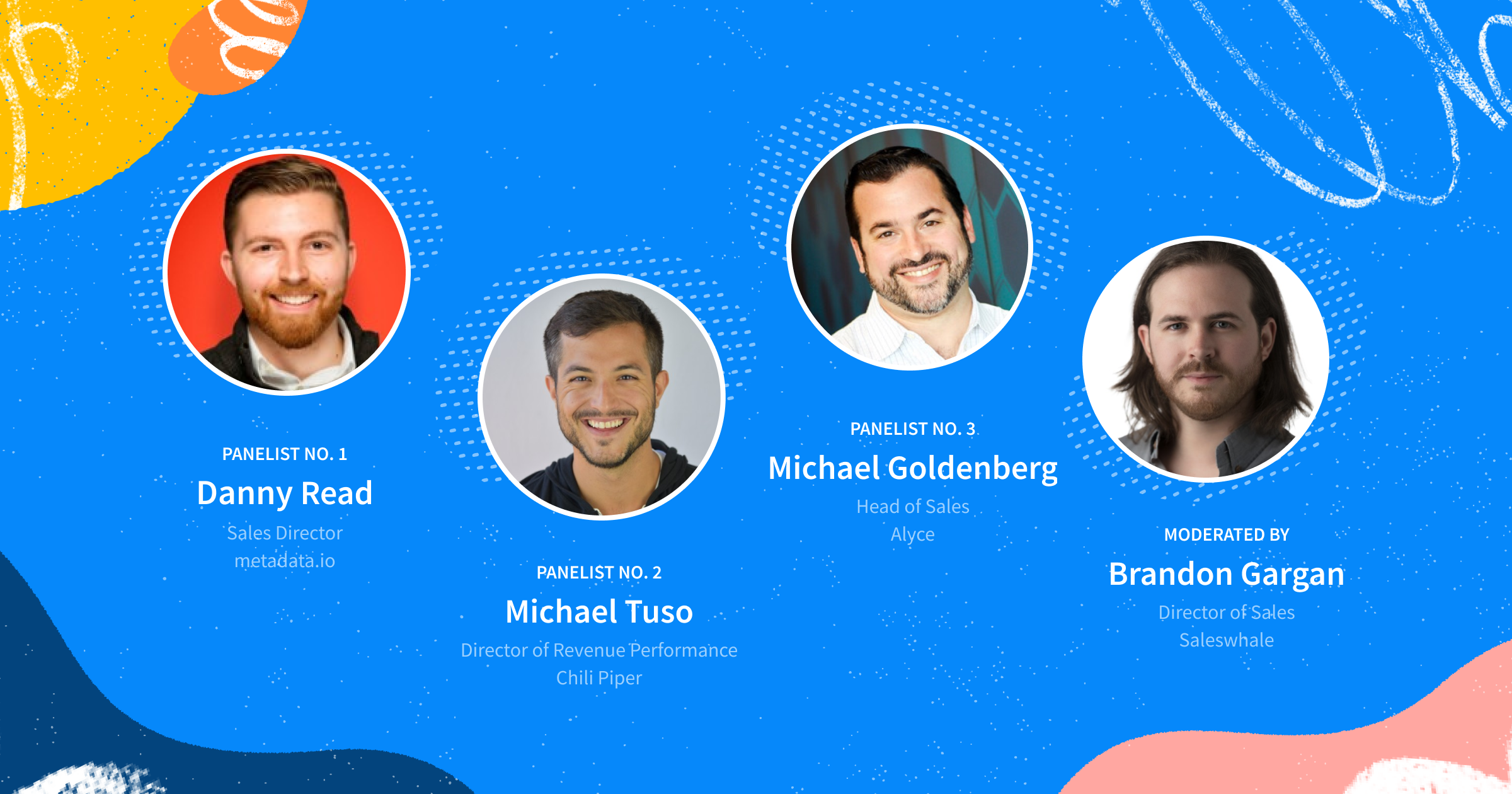
Marketing and demand generation is tough right now.
That's why we invited three sales leaders working in some of the fastest growing B2B SaaS companies around, and got them to answer one simple question -
"What is the most innovative campaign that marketing has run for your sales team?"
Panelists:
Danny Read, Sales Director at Metadata.io
Michael Tuso, Director of Revenue Performance at Chili Piper
Mike Goldenberg, Head of Sales at Alyce
Saleswhale's Director of Sales, Brandon Gargan, moderated this candid and straight-to-the-point, 30-minute session.
★★★★★
"Great first webinar. I agree it's about providing value - your webinar definitely did that!" -- Daniel Dawson, Demand Generation Manager
"This was one of the most no-nonsense and straight to the point webinars that I've attended!" -- Sharon Lourdes Paul, Head of Business Development
"Very practical and REAL strategies. And stats shared, all within 30 minutes." -- Su Yuen Chin, CEO
Personally, I learnt a lot too. I thought I'd share my summarized learnings from this webinar below, as we put it up on YouTube.
Watch it here before or after you read the learnings:
Jason Widup, Metadata's new VP Marketing, joined right smack in the middle of the pandemic.
Metadata's regular digital spend was reduced from $40,000/month to $17,000/month due to tightened budgets. Demo results were inconsistent month to month.
What follows is the story of how Jason, and Metadata's marketing team delivered 230% more demos for the sales team in a month. With 60% less budget.
After some brainstorming, Jason started to experiment with LinkedIn Conversational Ads.
LinkedIn Conversational Ads is a beta product by LinkedIn. Similar to a chatbot product like Drift, but appears as a sponsored message inside target audiences' LinkedIn inbox.

Results
Jason was given a lead goal of 50 leads (requests for demos) in April 2020.
He managed to generate 81 leads from LinkedIn Conversational Ads alone.
The sales team decided to double his lead goal for the next month. They wanted 120 demo requests for May 2020.
As of 28th May 2020, astoundingly, they managed to generate 180 leads.
Metadata has a lean team of four full-time sellers, so Danny Read has been nothing but busy running demos the last few weeks. Which is a great position to be in for a sales person.

Metadata built a very specific LinkedIn Campaign Audience around their ICP. 200-2,000 employees, C-suite, VPs, Directors of Demand Gen & Marketing. The full audience size was 19,000 people.
An interesting hack - Jason had the LinkedIn message come from himself. The whole idea was to leverage on "mimic titles" - "Hey, from marketer to marketer..."
They spent a total of $13,000 in ad budget. And got 24,000 impressions, 15,000 clicks in return. In just two months, Metadata generated 261 requests for demos from this campaign alone.
They saw an impressive 68% conversion rate from ad impression to engagement. For comparison, normal paid marketing campaigns for Metadata gets around 5% - 20% conversion rates.
The cost per lead (CPL) was $64. And this was for people directly in their target market. Which is absolutely phenomenal.
Danny encouraged the audience to try out LinkedIn Conversational Ads now, before they get "ruined by marketing."
And Saleswhale decided to take their advice -
Inspired by Metadata, Saleswhale tried out LinkedIn Conversation Ads over the last 3 weeks.
We spent $1,000 and generated 17 requests for demos for our ideal customer profile, at a cost per lead (CPL) of $59.
We experimented with over 14 variations - including conversation flows, messaging, call-to-actions, before we found our winning variation.
To see our winning variation (including the messaging, copywriting and conversation flow) and a step-by-step guide on how to get started on LinkedIn Conversation Ads, click here.
Alyce's marketing team ran their first user conference called YOUniverse, one month ago.
.jpg)
They didn't want this to be just another boring virtual conference.
Their interesting premise is that 9-5 and 5-9 personas for most professionals are now blurred. And it's more important than ever to be super personal.
They wanted to celebrate people's 5-9 efforts.
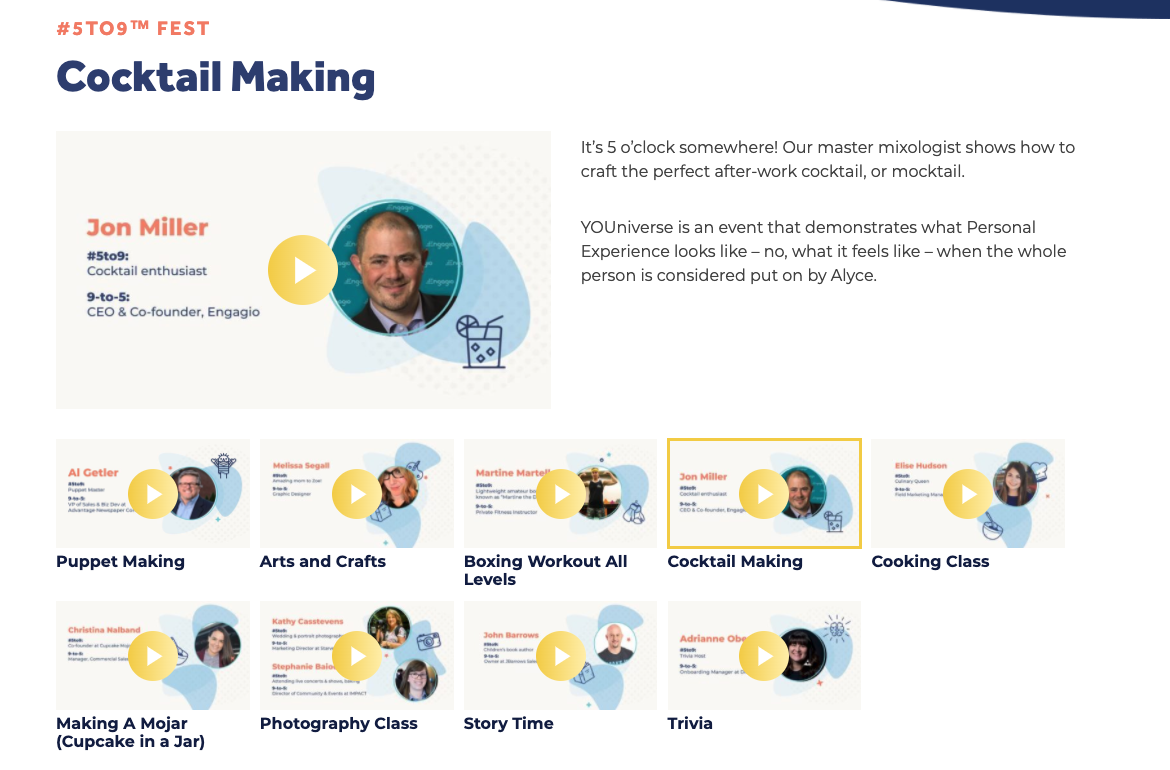
They managed to invite people like Jon Miller, CEO of Engagio, who founded Marketo previously, to do a workshop on Cocktail Making. They invited prominent executives to conduct classes on puppet making, cooking, storytelling etc.
Alyce's conference managed to attract over 1,000 attendees. And a large percentage of them were ideal customer profiles (ICP).
Alyce's marketing team managed to get almost 300 ICP named accounts to engage with them, through this campaign alone. This was 50% more than their previous best-performing campaign.
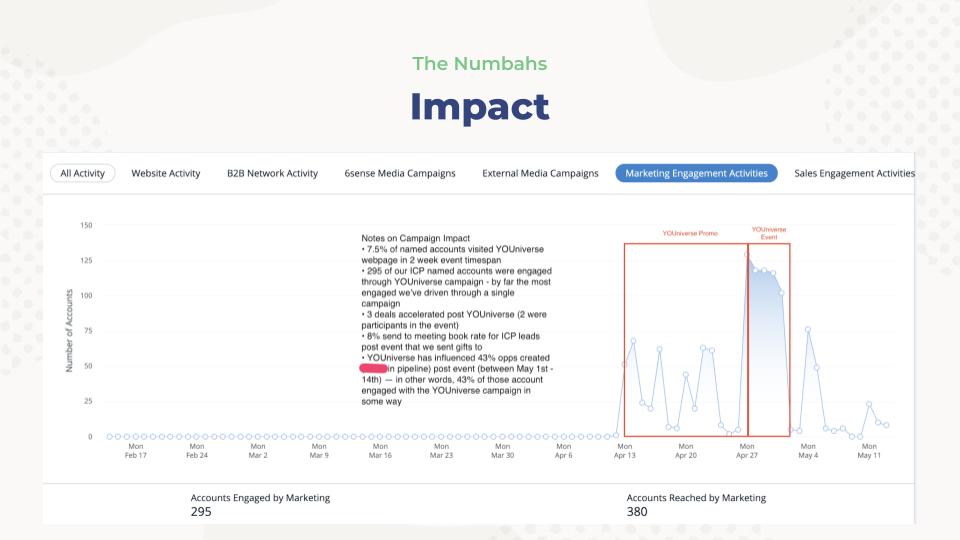
According to the sales team, this event was also "super helpful" for accelerating deals in mid-cycle.
The sales team even managed to revive two deals previously thought dead.
After the event, Alyce managed to get 10% (!!) of the attendees to engage in further sales conversations.
After the event, half of the opportunities created by the sales team over the last two weeks, was tied back to attendee participation in the event.
Michael shared about two interesting campaigns Chili Piper ran.
Chili Piper campaign #1
The first campaign is around swag.
Chili Piper's marketing team didn't just want to give out random swag (like socks) because they didn't feel it was meaningful.
They wanted to find swag that was uniquely creative, and allow people to experience the Chili Piper brand.
What they eventually landed with was branded hot sauce. You read that right.
They decided to run a hot sauce campaign called "Light a fire under your SaaS".
Back then, nobody knew who they were.
They started off using spreadsheets to send out their hot sauce to prospects and customers.
Then as they scaled the campaign, they eventually automated it.
This campaign ended up generating hundreds of thousands of impressions on LinkedIn.
"Hot Sauce Influenced Pipeline"
Most recently, they ran a campaign of 525 hot sauce bottles.
This campaign generated $280,525 in pipeline. And $94,525 in closed-won revenue to date.
They created 37 opportunities at a 7% conversion rate from the 525 bottles of hot sauce given out.
The overall conversion rate on the program itself was a phenomenal 54% -- which Michael jokingly calls "hot sauce influenced pipeline".
The crazy thing is the cost of each bottle of hot sauce is $3. For a total cost of $1,575.
So for every $1 they spent, they got around a 60X return.
Second-order benefits: brand recognition
They also enjoyed second-order benefits - brand recognition.
People started to recognize them at conferences, and the hot sauce became iconic with their brand.
Danny Read interrupted the webinar halfway with his bottle of Chili Piper hot sauce:
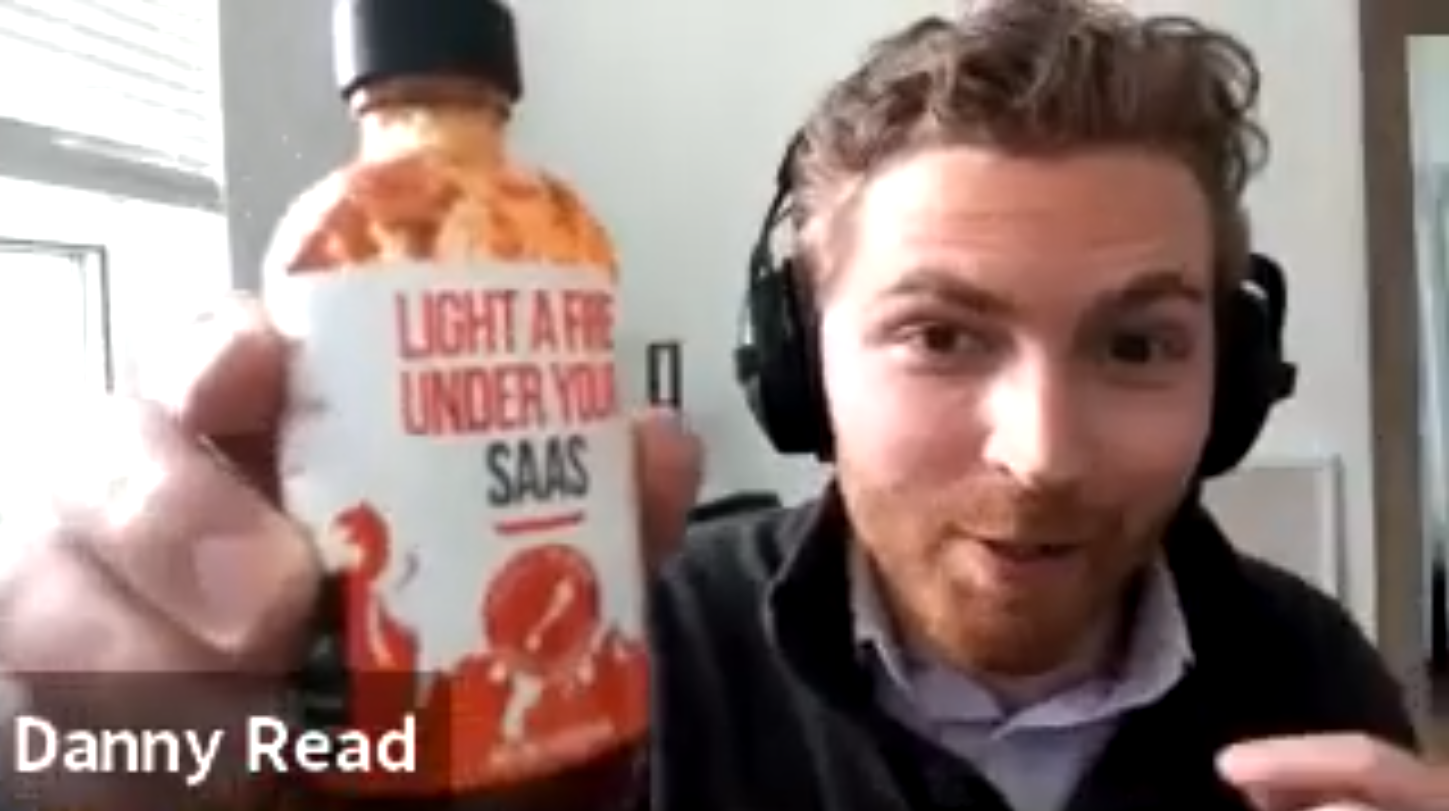
"And Michael, I don't mean to interrupt, but it also produced a really delicious breakfast for me as one of the recipients. And this is actually really good hot sauce. I'm a hot sauce lover and they didn't skip out on quality, so I'll give you that." -- Danny Read
Chili Piper campaign #2
The second campaign was more of a branding play.
They decided to host a party at Dreamforce, and host an "AE of the Year" award.
The total cost was $25K, plus $15K for awards.
This drove half a million impressions. 700 people registered for the actual event. 225 attendees showed up. They got 800 direct page views to their website in just the first few hours of promotion alone.
It just so happens that Danny was the winner of the award.
Michael maintains he didn't do anything to influence the selection ;)
The next generation of CMOs and marketing leaders are going to be born out of this time.
Marketing leaders are going to be challenged on how to rise above the noise, stand out, and deliver value to customers.
I would love to hear from you.
If you have any feedback on the above webinar, on how we could do better, what you enjoyed, what other topics you would love to see us cover, drop me a note at gabriel [at] saleswhale.com. I promise you that I read every single email that comes into my mailbox, and I'll reply you within 48 hours.
---
Brandon Gargan (00:00):
First up, we have Danny Read based out of Chicago, and he's currently the Sales Director at Metadata. Danny spent the past four years as a top performing BDR and an AE at G2. He's responsible for building out their sales development team. And he was also the winner of the 2019 AE of the year award, which was a national award that was sponsored by Chili Piper. So, Danny, thank you for joining us today.
Danny Read (00:22):
Thank you for having me.
Brandon Gargan (00:23):
Yeah. We also have Mike Goldenberg out of Boston. He is the head of sales at Alyce. And over the past 10 years, Mike has been a self proclaimed pioneer in the evolution of SaaS sales. He's worked his way up from an entry level employee to director, and he has experienced leading teams from zero to 10 million as well as leading teams generating over 35 million annually. Mike, thanks for being here.
Mike Goldenberg (00:45):
My pleasure.
Brandon Gargan (00:47):
And then last but not least, we have Michael Tuso, so based out of San Francisco. He's the director of revenue generation for Chili Piper. And Michael's a seasoned sales practitioner and manager of remote revenue teams. He was named one of the top 25 most influential sales leaders by the AAISP. And his passion is around equipping revenue teams with the tools to be successful while optimizing their performance through coaching, training, learning, and mentoring. So, Michael, it's a pleasure to have you here to be here.
Michael Tuso (01:14):
Love to be here.
Brandon Gargan (01:15):
Awesome. So we're going to start off with Danny today. And Danny, if you wouldn't mind just giving people just a quick background or intro to Metadata, if they do not know.
Danny Read (01:25):
Yeah, sure. I think it would be helpful for the audience piece for how we built out the campaign. So we are essentially a demand generation platform. So we help customers that are growth marketers, CMOs, demand generation marketers, support ABM strategies to kind of put all of their paid social on autopilot through AI and make their lives a little easier to generate leads from target accounts. In a nutshell, that's what we do.
Brandon Gargan (01:50):
Awesome. And the big question that everyone's here for, what was the most innovative campaign that marketing has run for your sales team?
Danny Read (01:58):
So it was, we had Jason Widup who was doing ... He was a part time marketer for us for quite some time. I joined Metadata in February of 2020, and then he started about two months later. I think his first week was in March. And so when he came in, he kind of came in during the COVID piece. So a lot of budgets got cut and we were dealing with a lot of uncertainty in the market. And so he wanted to try out a couple unique, different campaigns. And there was one that stood out and it was a LinkedIn conversational ad campaign.
Danny Read (02:30):
So anybody's not familiar with this, this is a beta product that LinkedIn has launched. It's essentially like a live chat or drift or any of those chat bots that you put on your website, but it will go directly into your inbox in LinkedIn. And so you can set up sort of a chat bot playbook and putting your message that'll reach an inbox for whoever you're trying to target and your audience within LinkedIn. So you want me to talk about the results of the campaign, Brandon, or do you have other questions you wanted to get to?
Brandon Gargan (03:03):
Yeah, I'd love to. We kind of dipped our toes into the conversational stuff on LinkedIn and we've had some promising returns early, but obviously it's not enough time for us to show any stats. So if you have any of that stuff, that'd be really awesome.
Danny Read (03:18):
Yeah. So I think there's a couple of things that, that Jason did that proved to be really effective. The first was he made the ... maybe I'll lead with this, I'll lead with the results. So Jason had a lead goal of 50 leads in April, and by just the LinkedIn conversational ad pieces alone, he generated 81. So reached his goal well above and beyond. So then what are our sales management team did was double that lead goal for them for the next month.
Danny Read (03:45):
So we had a lead goal of 120 demo requests for sales through the campaign. And that was for May. We're at the 28th of May, and he's generated 180 leads so far from that campaign. So he's doing just incredible work, we've got a team of four full time sellers at Metadata. So I have been nothing but busy running demos the last few weeks.
Danny Read (04:07):
So those are the results and the way that he got to those results are he built a very specific audience size list. So it was based on our ICP, it was based on 200 to 2,000 employees, and we sell to C-suite VPs, directors and managers in a marketing function. So CMOs, VPs of demand gen, VPs of growth marketing. And so the full audience size was 19,000 people and that's who we chose to run this against.
Danny Read (04:34):
And then the other thing that he did that was unique is he had the message come from himself as a marketer. So he tried a couple of different variations of this, but he found that if you reach out to the person that is a mimic title for you, a marketer talking to a marketer, it's more likely that they'll actually read the full message from you. Whereas if they see it from a sales person, more people are likely to tune that out at the end of the day, which is unfortunate for us all.
Danny Read (04:58):
But he got better results when it came from himself, so he ran it that way. And then the results for the campaign where he spent a total of $13,000 in ad budget. It got him 24,000 impressions, 15,000 clicks. At the end of the day, both those two months, netted out to 261 leads. The big one though, was the conversion rate of people seeing the ad. And the conversion rate was 68%.
Brandon Gargan (05:26):
Wow.
Danny Read (05:26):
Which ... Our team manages a lot of marketing campaigns and usually it's around 5 to 20%, so very big results. And it was a $64 CPL. And this is for people directly in our target market. So really, really, really good campaign. He kind of poured gas on the fire after we figured out that it worked. So I'd say that I think my three takeaways from the campaign for everybody is be very specific in your targeting right now. It's a really weird time. So evergreen marketing is not going to be your best bet, figure out who your product or your service is most relevant to and get hyper-focused on them. Including your audience and the type of content that you're serving them.
Danny Read (06:08):
Second is I would highly recommend everybody try out LinkedIn Conversational Ads now, before they get old and before marketing ruins it, because the second that one thing works, then marketing goes out and ruins it because everybody's doing it. So try to get in and do some initial testing there.
Danny Read (06:23):
And then third would be try using ... Have the message come from a mimic title of who you're trying to reach. If you're trying to reach maybe an IT Director, have that message come from say, your head of IT at your company. It's more likely it's going to get opened and read and better your conversion rates. So I think those are my three takeaways from Jason's campaign and really what drove those type of results.
Brandon Gargan (06:46):
That's awesome. That 68% conversion rate is astounding. And I think that to your point, it's something I never really thought of, but as a sales leader, someone who's selling a sales tool to other sales leaders, I feel like that's something that works really well for me, based on my experience. So translating that as a marketer reaching out to another marketer, that's a really good tip as well. But that sounds like an awesome campaign, and we're going to make sure that we double down on our conversational ads before they get blitzed by everybody else.
Danny Read (07:15):
Yeah, for sure.
Brandon Gargan (07:17):
Thanks, Danny. Appreciate that.
Danny Read (07:19):
Yeah, of course.
Brandon Gargan (07:21):
So Mike, why don't you run us through your most innovative campaign?
Mike Goldenberg (07:25):
Yeah, so first off, let me say that was great, and we will be hopping on that quickly. But what you just hit on in particular that I really agree with is the importance right now of being super targeted and focused and personal right now, versus everything green field, all this like noise of generic stuff is ... I mean, it wasn't working before and now it's even way worse in terms of just where people's minds are at right now, what they have time and energy for. And that kind of leads us to what Alyce does.
Mike Goldenberg (08:03):
So what we are, our company is all about is trying to build more personal bonds and connections in the business world. And that's done through our personal experience platform that allows you to send an individual one-to-one gifts at scale to people through a better understanding of their background and the things that they like.
Mike Goldenberg (08:25):
And really the whole premise is that the lines between the 9:00 to 5:00, and it's funny, because we were working all of this before COVID hit and actually made this much more of a reality, but is that the lines of the 9:00 to 5:00 and 5:00 to 9:00 were blurring and that everyone can reach out and talk to someone about their role. And certain titles, especially, it's they're getting hit up. When you're that C level, VP level, director level manager like probably all of us on the webinar right now are going after a lot of the same people.
Mike Goldenberg (09:00):
How you stand out to those people beyond just their persona? And you hear these terms persona, "personalized", but we're taking it kind of to that next step, which is the personal. And to actually have those conversations about things that are beyond just their work and what they do. And obviously you need to be relevant to their work, but you know, this being an amazing way to stand out. And something to, again, be more relevant ... And just be more human in the way that we interact in business. And I think one of the silver linings of the current situation is just, I find that everyone has become so much more human. Everyone's brought down the facades when their kids are yelling in the background and things like that.
Mike Goldenberg (09:46):
So again, the timing of it all has been super interesting in that we were already working on all of this beforehand. But the specific campaign that I was going to reference was around our YOUniverse Conference that we've put together. So the whole premise was that it was to ... And again, this was before I think now a lot of the digital things have been played out a bit, all these digital conferences.
Mike Goldenberg (10:17):
But when we were doing it, the whole premise was that this was not going to be another boring type of conference. This was going to really celebrate people's 5:00 to 9:00 efforts. And it would just be engaging in a way that people want to be engaged with. And so it was a lot of people that you may know as a professional, often speaking about things like how they cook, and how they paint, and things like that.
Mike Goldenberg (10:43):
And so the whole goal was to have just this really concerted effort. And it's obviously going to be different for a lot of companies. They may not have a theme like we have at Alyce, which is around the personal. But I think the bigger thing that worked really well for us around this whole conference, and I'll talk to some of the results in terms of how we know it was so successful, was that it was just this very centered approach in terms of all of our efforts over a three to four week period were all intertwined with sales and marketing.
Mike Goldenberg (11:16):
Working together in terms of our posts and videos, and building the momentum, and having the messaging really intertwined to what we were doing with the show. Versus kind of this thing that's just sitting out there that people don't know about very much. The value of the show actually was much more than just the attendance, and it was over a thousand people there of ICP type of context we were looking for. But it was more just about all those interactions we were having even beforehand, and the way that our message by being consistent from all the way through a sale and marketing and it building on each other, it really helped where we were having conversations about it even with people who didn't go, who just thought it was a good idea and just it was a good conversation starter.
Mike Goldenberg (12:06):
And so in the course of ... Like I said, the multiple weeks that we were doing all this different messaging on different platforms, carrying through. We were able to get over 10% of our ICP named accounts, our top tier accounts to engage with us. Either through clicking on things through emails or sign ups. Also, we had about 300 of our ICP named accounts who engage with us, which was over ... I think 50% more than our best campaign prior to that.
Mike Goldenberg (12:49):
So again, we are fairly focused right now on larger enterprises and we do have a pretty narrow market that we're going after. So to be able to get 10% of your market to engage with you in a real way with one campaign was immensely helpful for us. It was also particularly helpful in terms of deals that were in mid cycle. So we actually had two deals that were previously we thought dead come back to life. And a third deal that accelerated in particular very quickly, just because of the experience they had and they were just very on board and just got them excited about what we were doing. So that was super huge, again, kind of bringing those deals back.
Mike Goldenberg (13:36):
And then after the show, just in terms of following up with people, we were able just in our very first initial outreach after that to get 10% of the people to engage in further conversations. So it was all of these different things. It was this consistent message that got them all to the place, a central place for us to tell the story and to get them excited and to really have everything that our product does kind of intertwined with kind of the bigger theme that we were trying to get to. And I think just the combination of those things was really successful. And half the opportunities that we created in the next two weeks after the show in particular we were able to tie back to participation in the show as well.
Mike Goldenberg (14:26):
So I think for me the big takeaway and the things that we're trying to replicate, because obviously we can't just do the same show again, is just having that really tied together strategic approach in terms of getting everyone singing the same song and getting it out there, versus kind of the virtual event where sales isn't maybe fully bought in, or they don't know really how to promote it. We did a lot of sales enablement and our marketing team was super active in terms of using the sales team, and the whole company for that matter, in getting the messaging out and really getting a lot of the people, not just anyone to the event and to the show and engage, but very much the ideal customers that we are looking for.
Brandon Gargan (15:18):
Yeah. And I actually, I like that kind of the theme of this is you guys are focused on that more personal connection, and it really sounds like this event and kind of building your brand and getting the personality of your company out there helped throughout the entire funnel. It wasn't just that you got 10% of your ICP to engage with you, but it was also that the people, the deals that you thought were dead, or the people that were having conversations with you, they really got to see, "What is this company about? What do they do?" And it really helps move those deals along. And in my experience, some of that extra curricular ... Those statistics, they're hard to measure from something like this, but it sounds like overall it was really successful for you.
Mike Goldenberg (15:56):
Yeah. And the other thing I'll say is that when you see the results, it just ... Even if you can't point it to any one particular thing, it kind of reassures you that you're going in the right direction.
Brandon Gargan (16:10):
Right. That's awesome. Well, thank you for sharing that. And next up, we've got Michael Tuso. I think you've got a couple of different campaigns that you wanted to share with us, but first can you just give us a little bit of background on Chili Piper and what you guys do?
Michael Tuso (16:24):
Yeah, absolutely. Most people know us for being a scheduling tool. So we schedule and route your inbound leads. Most of the time you'll have an SLA in place where it takes 24 hours or more to get in touch with your leads. But data suggests that if you don't get in touch with them within the first five minutes, your likelihood of conversion drops by 88%. Chili Piper solves that problem by scheduling and routing it to the right person, also qualifying them. So average conversion rate on the inbound leads go up on average 70% with our customers.
Michael Tuso (16:59):
We also have a tool we call Chili Inbox, which enables you to gain account intelligence, and also collaborate directly through email. So if you think in the collaborative function that you have in Google Docs, you can do that through email with Chili Piper. So that's a product we're in the middle of launching right now. So if you're interested in that, I can talk to you one on one. But we're sort of in the middle of launching that tool right now. And that's what we do.
Brandon Gargan (17:28):
Awesome. So walk us through the first campaign you want to talk about.
Michael Tuso (17:32):
Yeah, absolutely. I have a couple of different campaigns and I'll sort of preface it with ... So I think technically I was the fifth employee [inaudible 00:17:41] first ten employees that Chili Piper. And when I started here, I was the first sort of sales manager role starting at the company. And it was difficult to recruit candidates, and we didn't have a marketing team set up. So I'm thinking, how do you thrive and how do you build a company in this type of environment? And I was actually kind of excited to do it.
Michael Tuso (18:04):
And I think we really adopt this notion at the company that no one person is responsible for one function within the company. No one person is solely responsible for sales. No one person is solely responsible for marketing, but rather we're all responsible for generating revenue. People are buying and tribes now, so we need to be selling in tribes. And we've really done a great job in terms of getting everyone in the company to sort of adopt that mindset. And so that's kind of the structure that we took on.
Michael Tuso (18:37):
Fast forward about eight months after starting, we had a very solid inbound lead flow and a pipeline of up to 40 candidates applying every single day for roles. Whereas previously it was very difficult to get people for even SDR positions. And a lot of it had to deal with some of the campaigns we did.
Michael Tuso (19:01):
The first campaign I'll talk about is sort of on brand with the name of the company. So Chili Piper is sort of a play on words. That's how we came up with it. The actual logo is a pipeline, and the sort of saying with the company is, "If our prospects want a tool, we'll build it." Is basically the symbolism behind and the meaning behind the name.
Michael Tuso (19:27):
So the first kind of thing we were thinking about is, "What is the swag that will accompany our company?" And we don't want to just give out socks and hope ... I can't tell you how many pairs of socks I have from companies out there. And the thing is it doesn't evoke emotion, and it's not meaningful. I wear them when I work out and I don't think about the brand ever.
Michael Tuso (19:52):
So let's take a step back and think creatively in how to get other people to recognize and really experience your brand. So we did this really fun campaign with hot sauce. It says, "Light a fire under your SaaS." We spent a long time coming up with that tagline. It took a bunch of us to do it. Nobody knew who we were. I first did it on social media. Then we used a platform to send out the actual hot sauce. At first, we just kind of used spreadsheets to do it and then we sort of automated that process.
Michael Tuso (20:27):
Hundreds of thousands of impressions over LinkedIn and other platforms, incredible pipeline for a candidates just recognizing the brand. And I'll share some actual other numbers with you as well, coming directly from our CRM. So most recently, a campaign of 525 hot sauce bottles, and they're just these little bottles you may have seen me post about it, generated $208,525 in pipeline, resulting in closed won of $94,525 in closed won revenue. The 525 bottles also resulted in 37 opportunities created at a 7% conversion rate from opportunity. And then the overall conversion rate on the program itself was 54%. And that was hot sauce influence pipeline.
Michael Tuso (21:32):
And it sounds crazy. The total cost per bottle is $3, which bring the total costs of the whole thing to $1,575. So for every ... Literally for every $1 we spent, we got a 60X return. And it sounds crazy, but it evokes emotion at every conference. They recognize our brand, especially super in the beginning. And it definitely became sort of iconic with who we are. So that's one campaign we did. We had-
Danny Read (22:04):
And Michael, I don't mean to interrupt, but it also produced a really delicious breakfast for me as one of the recipients. And this is actually really good hot sauce. I'm a hot sauce lover and they didn't skip out on quality, so I'll give you that voucher.
Mike Goldenberg (22:20):
I will say the first time I heard about Chili Piper was from our CEO, Gabe, who has a bottle as well. So I can speak to how successful it is too.
Michael Tuso (22:28):
Yeah. And it sounds really silly, but there are real revenue numbers that's tied to being creative and being emotional and people talk about being human, but they don't always talk about how. And I think having a little fun with it as a good way to go.
Michael Tuso (22:44):
The second program we did was more of a branding play, to be honest, but I'll share some of the insight and thinking behind it. We wanted to do a party at Dreamforce. And I said, "I don't want to just throw a party everybody else does, but I wanted to make a big splash." And we put a lot of thought into it, but we came up with the idea of the Account Executive of the Year Awards. We assembled a panel of some of the best names in sales, and we created this scoring criteria. I got our legal team to approve it.
Michael Tuso (23:17):
For that campaign we had over half a million impressions, 800 page views, direct hits to our website just in the first few hours of posting. We had over 225, again as a small company, over 225 event attendees. Five amazing panelists in the industry. The overall cost of the event was around 25K, plus around $15,000 for awards.
Michael Tuso (23:47):
Again, half a million impressions across our entire team, over 700 registrants for the actual event. And it was a really, really big success for the company as well. So it's something that we're looking into doing a further. So yeah, created an award in the sales space. It just so happens Danny was the recipient of that award. I didn't have any influence on it, I promise. And yeah, it was a really successful campaign for the company.
Michael Tuso (24:22):
And then the last thing I'll just speak on really quickly is we did these sort of micro dinners around the country to kind of ... Where we had sales leaders in sort of small groups. And it really fostered meaningful connection to one another. And we did several of them as well. So in one of them we partnered with another company and actually did a cooking class, and that was in San Francisco.
Michael Tuso (24:46):
So the big thing for us is being innovative, being creative, don't be afraid to step outside the norm and just try something. And if it doesn't work, it doesn't work. But if you're having fun, the chances are that it will work and it will be exciting. And there will actually be a good ROI and a business case for you to be able to speak to internally in your company, whether it's getting approval, and then also engaging other people to get excited about your event or whatever it is that you're doing.
Michael Tuso (25:15):
So my biggest piece of advice there is just actually have fun with what you're doing and don't be afraid to get creative. And then use everyone in the company to also help you promote, recruit, and don't just rely on one specific person as well. So those are a couple of campaigns we did.
Brandon Gargan (25:34):
Awesome. Thank you for sharing that. And I think it's actually on brand for this webinar, what you're talking about. Being creative, stepping outside of the norm. And that's kind of been the theme for all of you in some way or another. With Danny talking about having personalized conversations, "I'm a marketer talking to another marketer." Mike, you talking about personal gifts and actually bringing that personal connection back to sales and the event that you did. And then obviously light a fire under your SAS hot sauce.
Brandon Gargan (26:03):
Just being personal, like having your company brand be your brand, right? Show personality, do something different. I think, especially with this whole kind of crisis that we've been going through, it really has made people open their eyes and think outside of the box and think that maybe there's not just one way of doing stuff. Maybe I can just try stuff and see if it works.
Brandon Gargan (26:21):
So anyways, I appreciate the three of you guys jumping on and just sharing those stories. I personally learned a lot from it. I think I'm going to take aspects from every single thing that you guys said and try and implement it here. And hopefully there's a lot of value for everybody that was listening.
Brandon Gargan (26:37):
And for anybody that's on the line here that does have questions or have shot us questions already, please feel free to email those to me directly. And I will distribute those to Danny, Mike or Michael. But thank you again for chiming in, and hopefully you guys gained some value from this. All right, everybody have a great day. Take care.
Danny Read (26:56):
Thanks Brandon. See you everybody.
Brandon Gargan (26:58):
Thanks guys.
Michael Tuso (26:59):
Bye bye.
Brandon Gargan (26:59):
Bye.
Mike Goldenberg (27:00):
Thank you.


Co-founder & CEO at Saleswhale
Sign up for cutting edge ideas on conversational marketing, AI assistants and martech.

Saleswhale for Salesforce allows you to build powerful automated lead conversion workflows. This allows you to re-engage with your neglected marketing leads at...
19 APR 2021
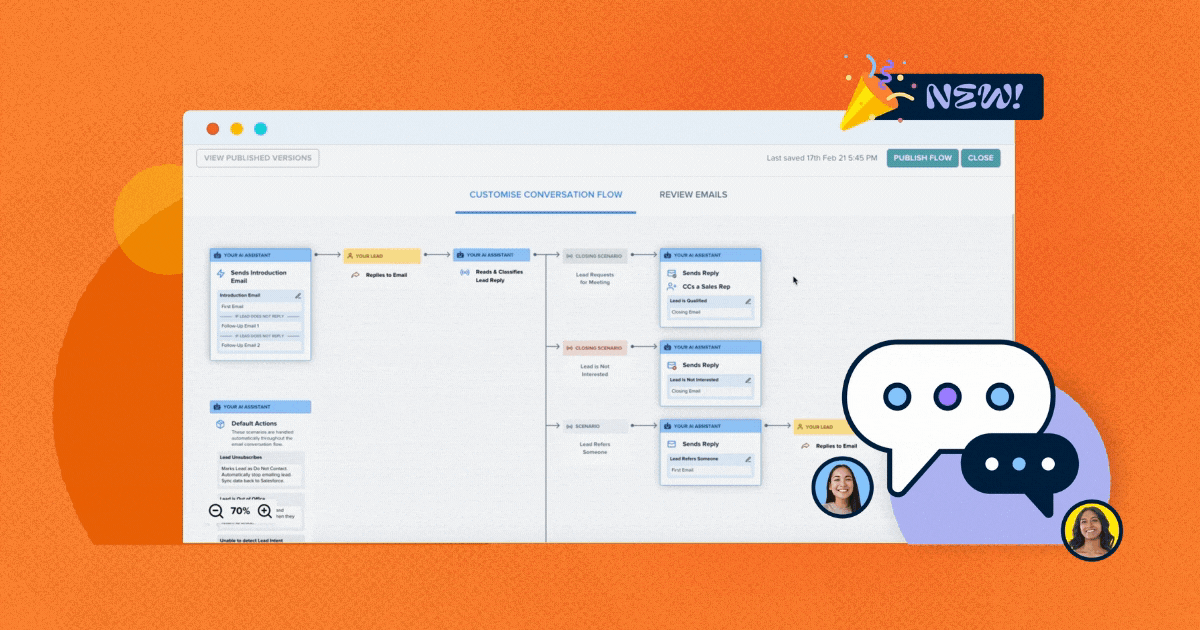
Demand generation and marketing teams generate more leads at the top of the funnel than ever in this new digital-first world. Saleswhale helps ensure those...
1 MAR 2021
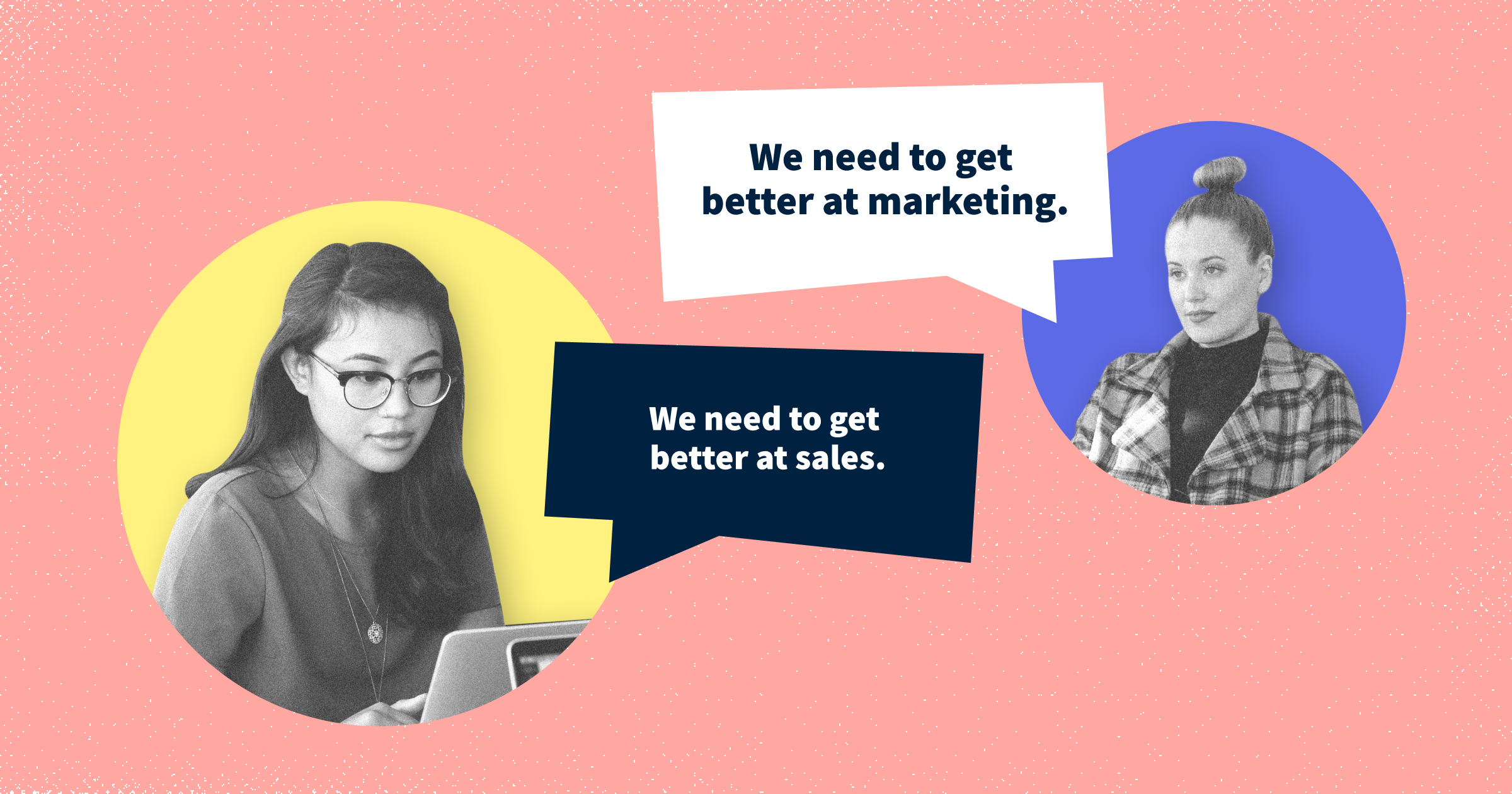
Marketers that focus on MQLs end up doing the wrong things in order to achieve the metrics. So I changed it.
16 JUN 2020
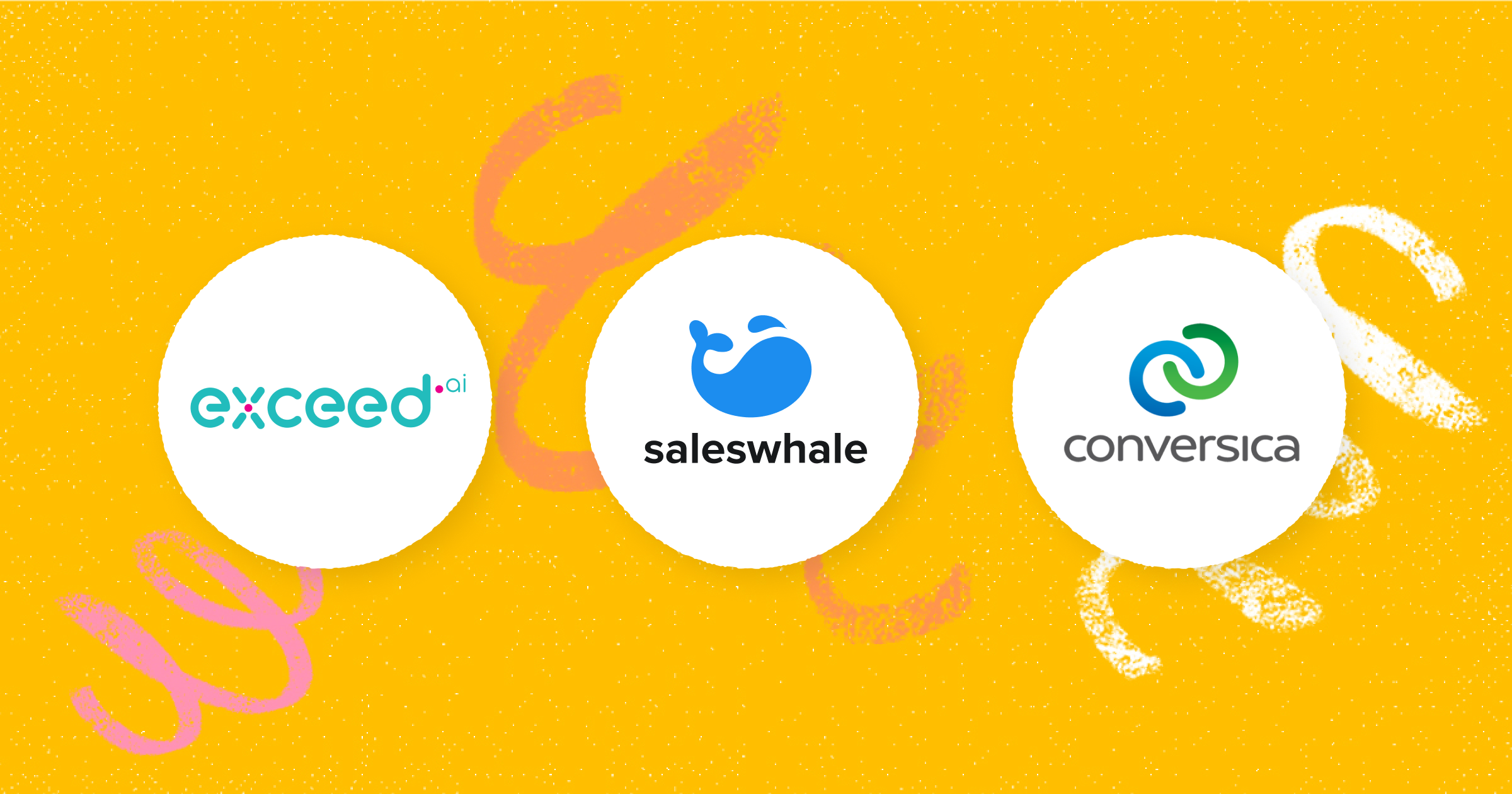
Conversica isn't the only player out there. Learn how Saleswhale and Exceed.ai compare and make an informed decision.
15 APR 2021
By providing your email you consent to allow Saleswhale to store and process the personal information submitted above to provide you the content requested.
You can unsubscribe at any time by clicking the link in the footer of our emails. For information about our privacy practices, please visit our privacy page.